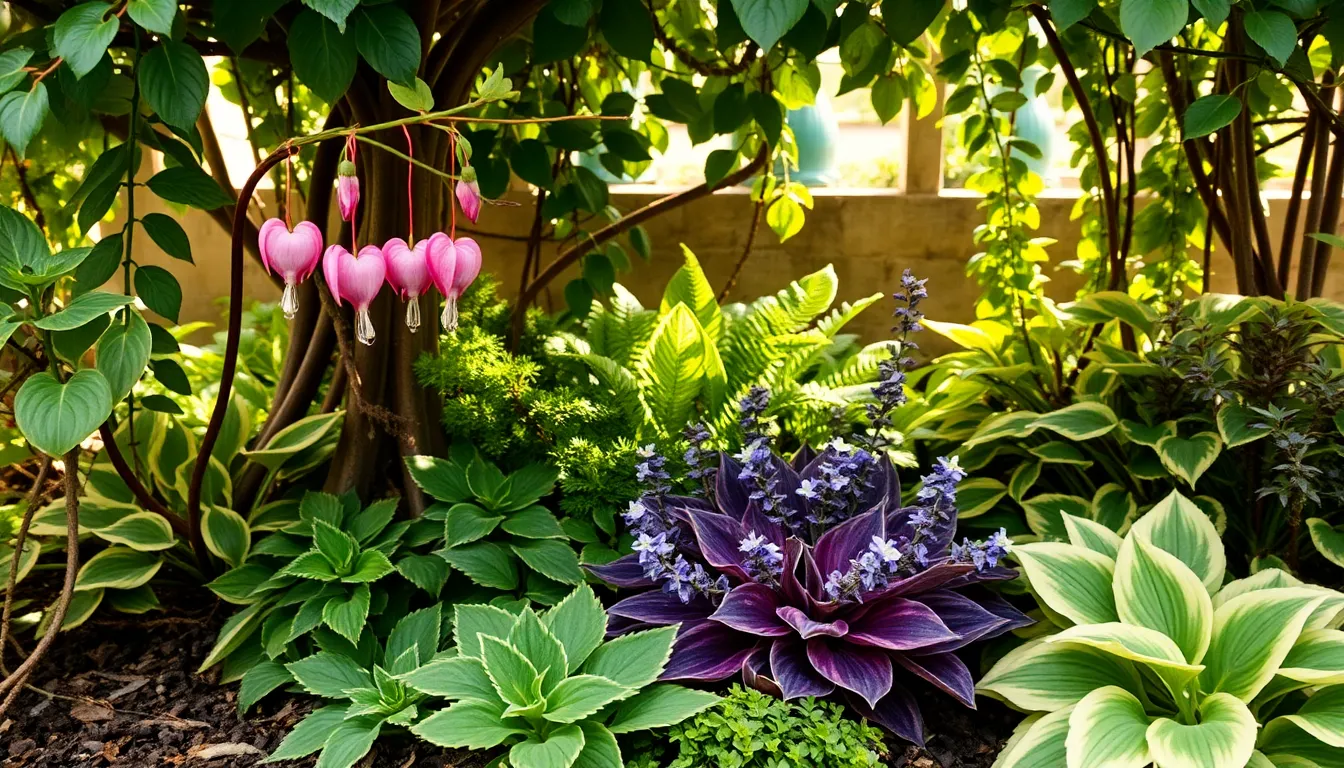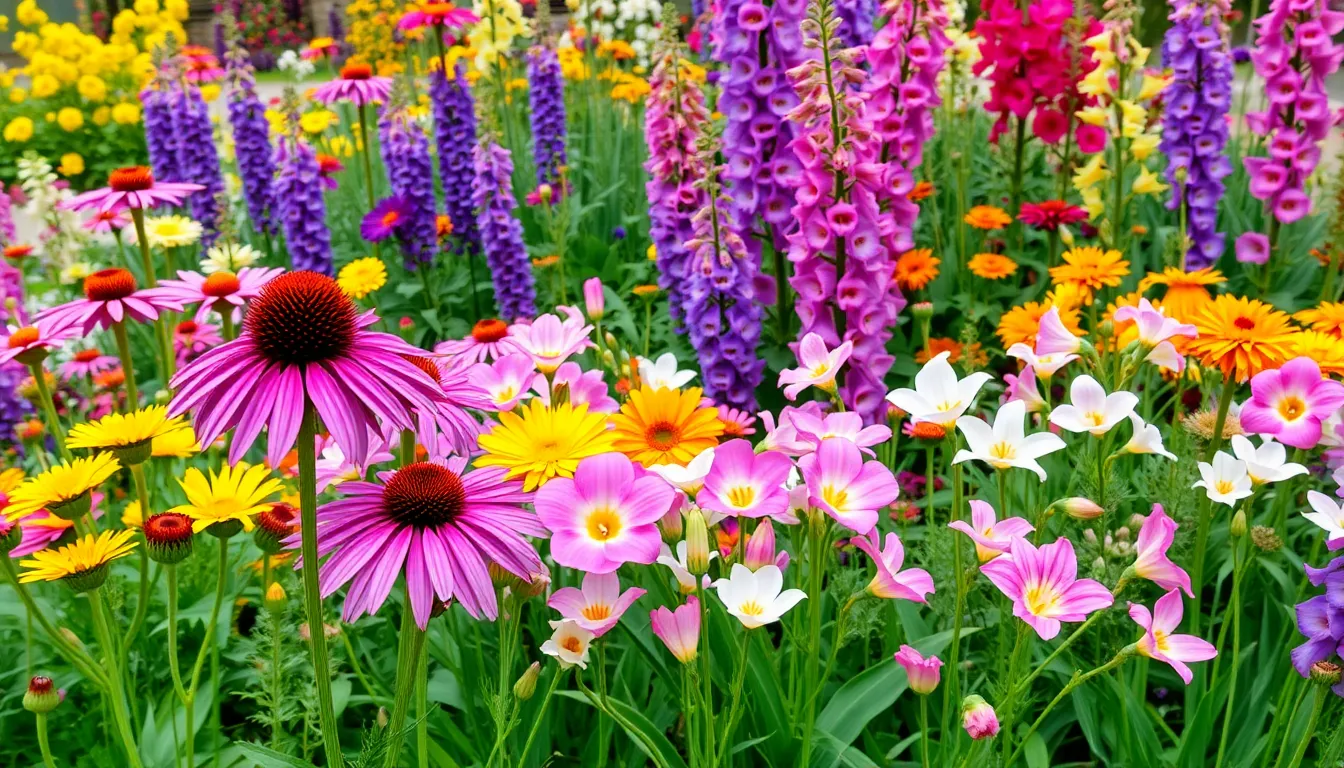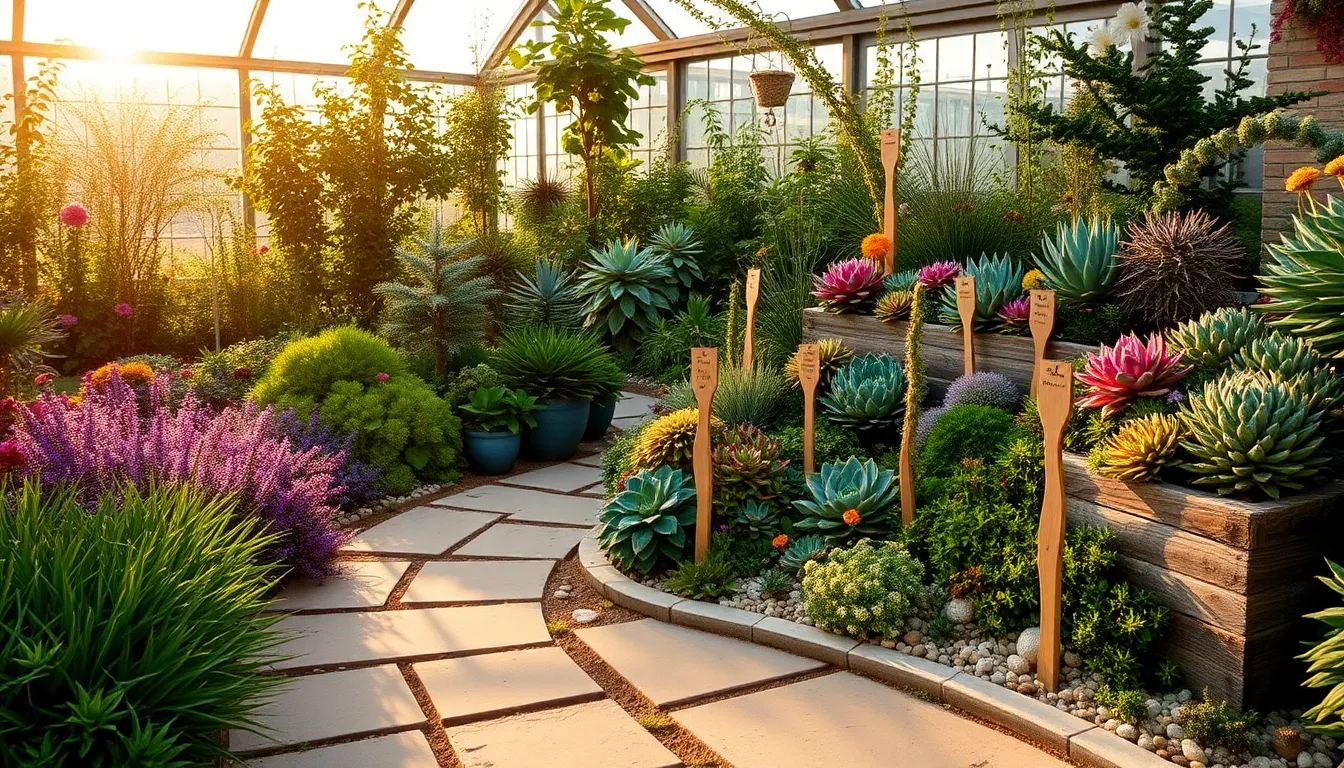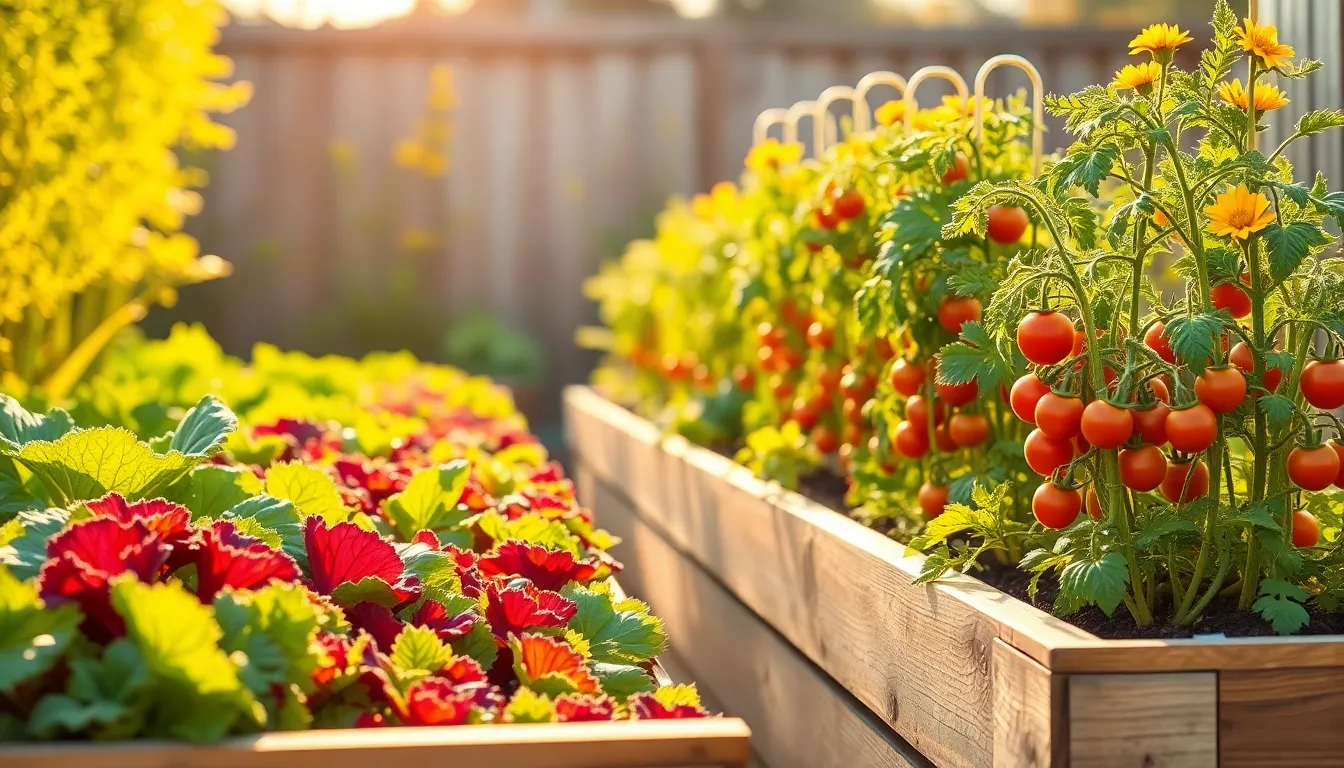Welcome to the enchanting world of shade-loving flowering plants, where even the dimmest corners of your home can burst into vibrant life. Whether you’re just beginning your gardening journey or are a seasoned green thumb, mastering the art of growing these indoor beauties will bring a new level of satisfaction and joy to your gardening endeavors.
Imagine transforming overlooked spaces into lush, colorful displays that not only brighten your home but also boost your confidence as a gardener. This carefully curated list of the ten best flowering plants for shady areas offers practical insights and tips that will empower you to create thriving, picturesque indoor gardens with ease.
As you explore this guide, you’ll discover the unique charm and resilience of each plant, tailored to flourish in less sunny spots. Get ready to unlock the hidden potential of your indoor spaces, knowing that success is just a leaf, or in this case, a petal away!
Bleeding Heart (Lamprocapnos spectabilis)
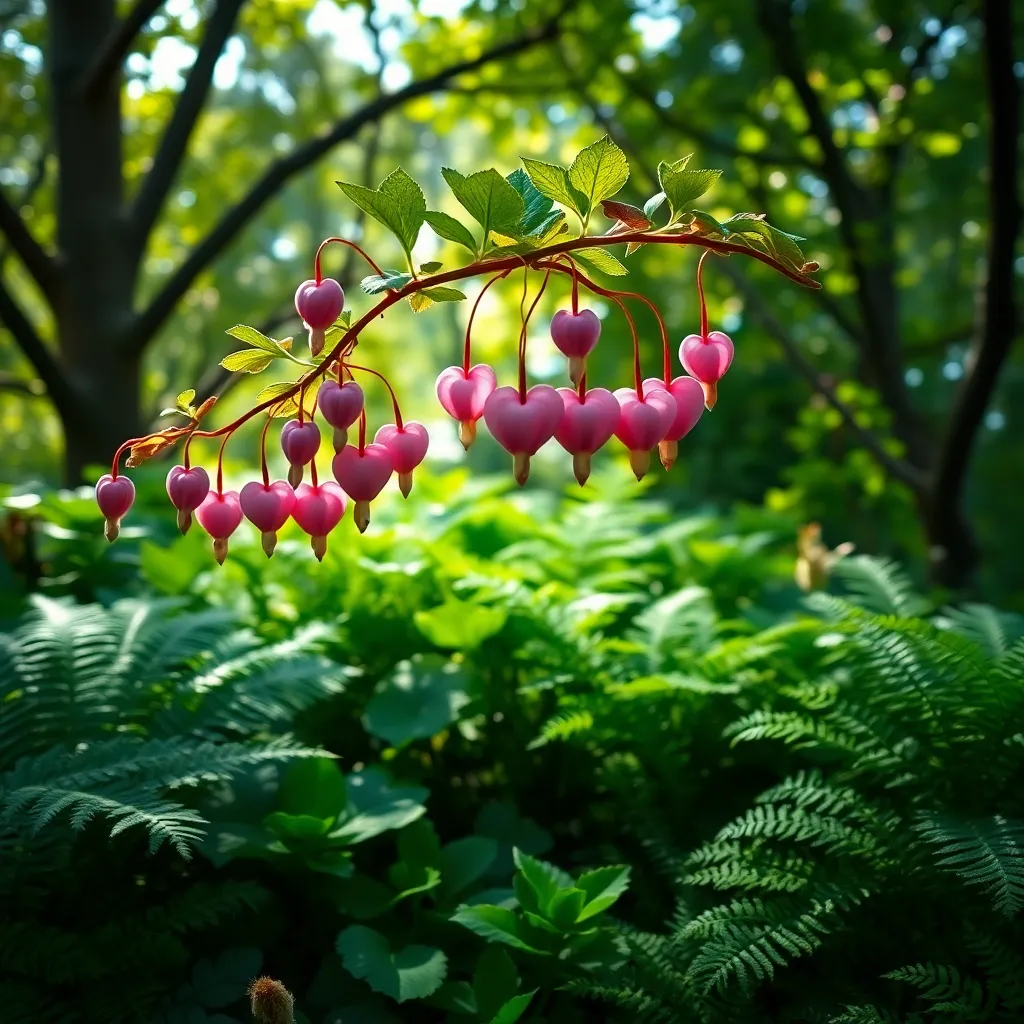
The Bleeding Heart (Lamprocapnos spectabilis) is a stunning perennial that thrives in shady garden spots. With its heart-shaped pink and white flowers, it adds a touch of whimsy and elegance to any garden.
To cultivate a healthy Bleeding Heart, plant it in well-drained soil enriched with organic matter. It prefers a slightly acidic to neutral pH, making it ideal to amend the soil with compost or leaf mold.
Water your Bleeding Heart consistently, ensuring the soil remains moist but not waterlogged. During dry spells, increase watering to prevent the plant from wilting, especially in the early stages of growth.
Although the Bleeding Heart is generally low-maintenance, providing a layer of mulch can help retain moisture and suppress weeds. For advanced gardeners, consider dividing the plant every few years in early spring to rejuvenate it and encourage more vigorous blooming.
Hosta ‘Elegans’ (Hosta sieboldiana)
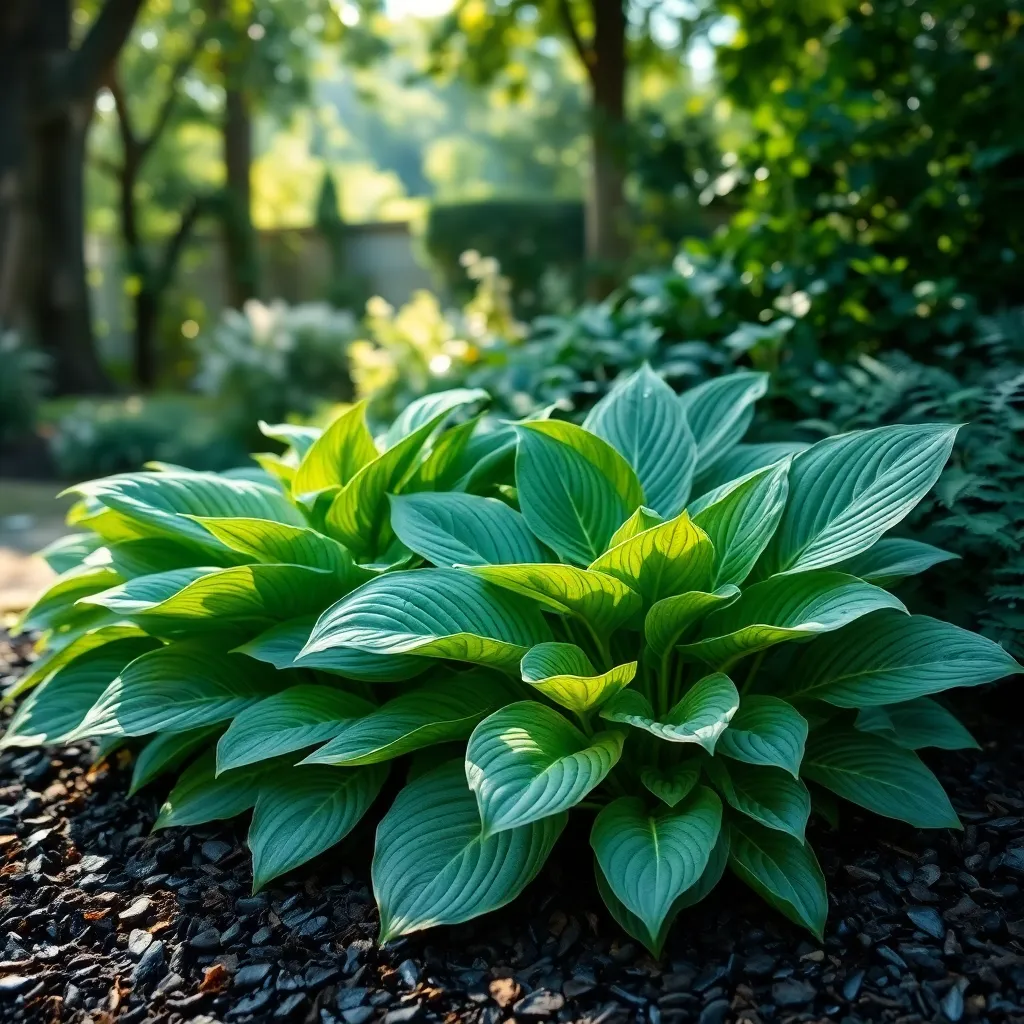
Hosta ‘Elegans’ (Hosta sieboldiana) is a spectacular choice for shady gardens, known for its impressive, large blue-green leaves. These plants not only add texture and depth to shady areas but also produce beautiful, fragrant white flowers in midsummer.
When planting Hosta ‘Elegans’, choose a location with partial to full shade to ensure optimal growth. The plant thrives in rich, well-drained soil, so consider incorporating organic matter like compost to improve soil quality.
Watering is crucial for Hosta ‘Elegans’, especially during dry spells, as consistent moisture is necessary for healthy growth. Aim to water deeply once a week, ensuring the soil remains moist but not waterlogged.
For those looking to enhance growth, applying a balanced slow-release fertilizer in early spring can provide necessary nutrients. Additionally, dividing the plants every three to four years helps maintain their vigor and encourages lush foliage.
Astilbe ‘Fanal’ (Astilbe x arendsii)
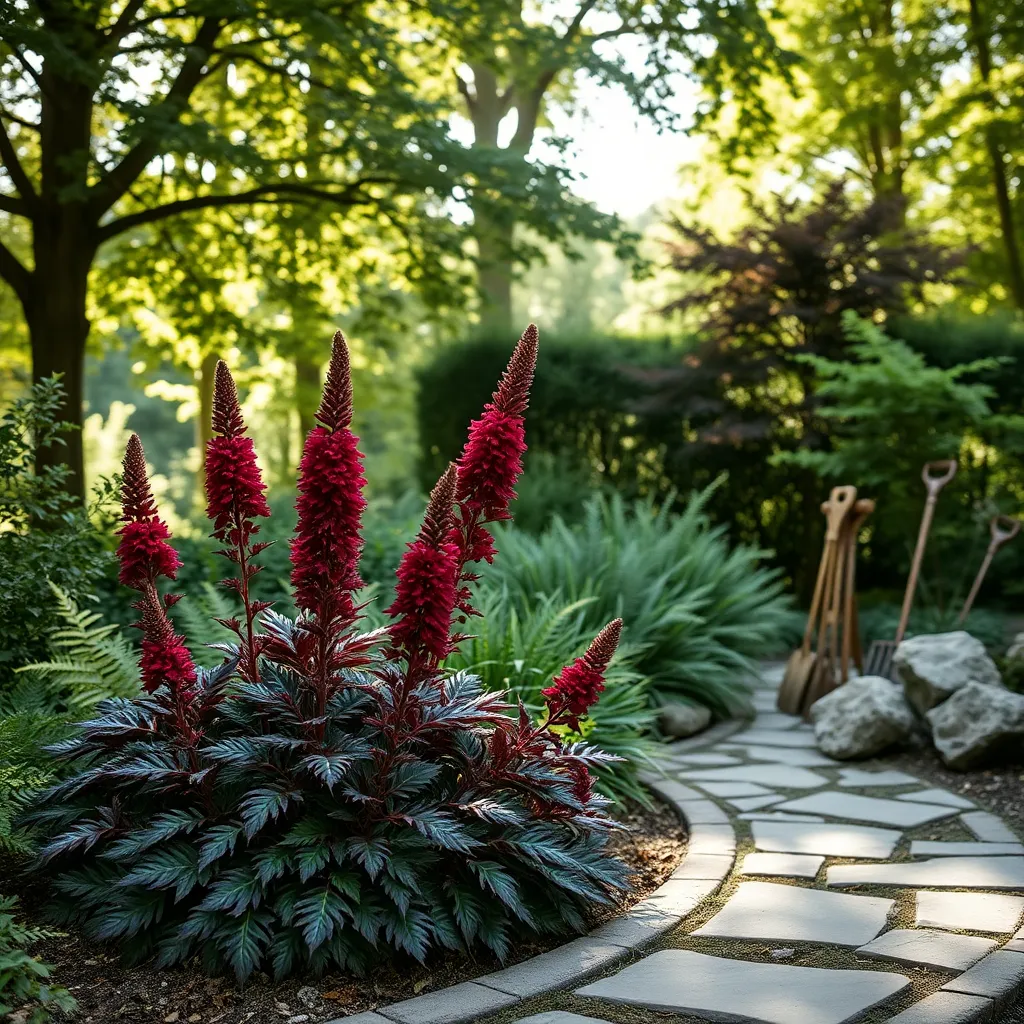
Astilbe ‘Fanal’ (Astilbe x arendsii) is a stunning choice for adding vibrant color to shady areas in your garden. Known for its deep red plumes, this perennial thrives in partial to full shade, providing a bold contrast against its lush, green foliage.
When planting Astilbe ‘Fanal’, it’s important to choose a location with moist, well-draining soil enriched with organic matter. Ensuring consistent moisture is key; consider adding a layer of mulch to help retain soil moisture and moderate temperatures.
For optimal growth, water this plant regularly, particularly during dry spells, as Astilbe prefers a consistently damp environment. A great tip for advanced gardeners is to divide the clumps every three to four years to maintain plant vigor and prevent overcrowding.
Fertilizing Astilbe ‘Fanal’ in early spring with a balanced, slow-release fertilizer will promote healthy foliage and abundant blooms. Gardeners can enhance the plant’s visual appeal by deadheading spent flowers, which encourages a tidy appearance and sometimes even a second bloom.
Toad Lily (Tricyrtis hirta)
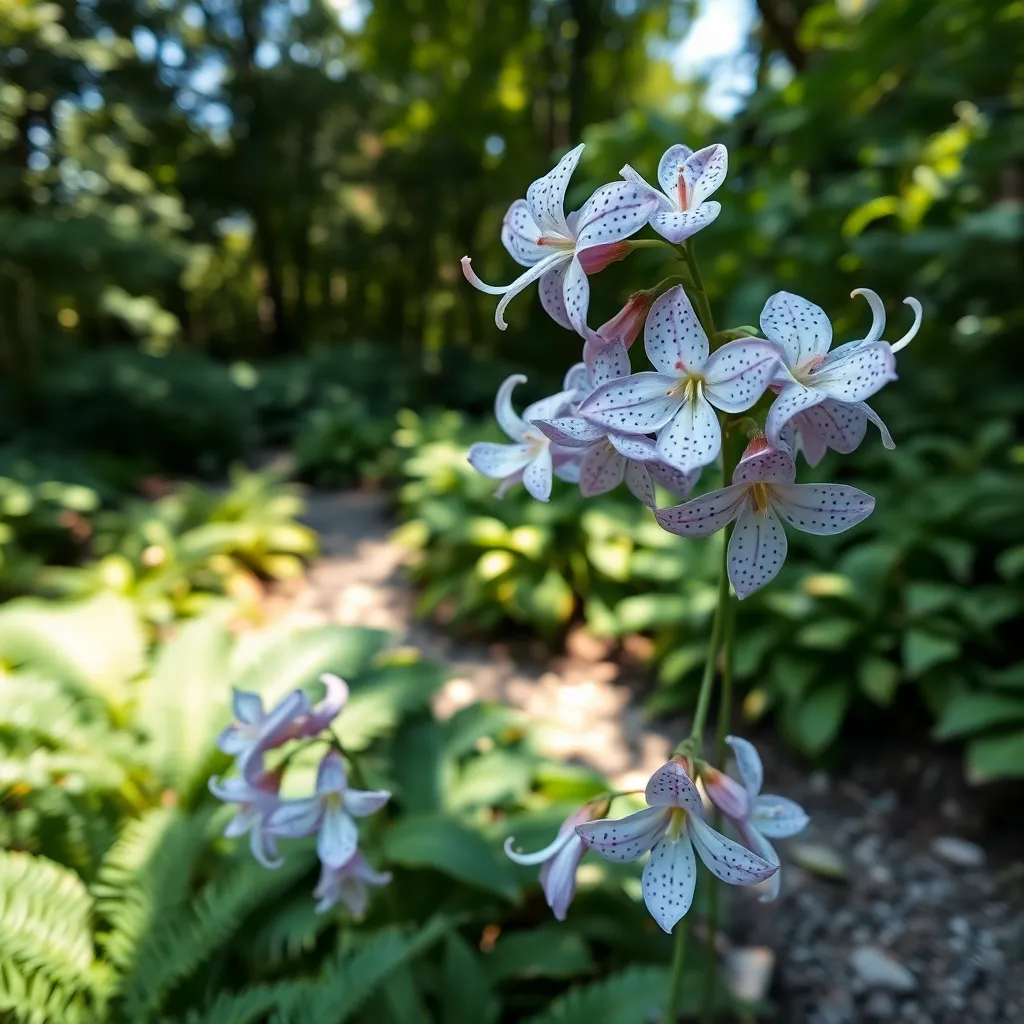
The Toad Lily (Tricyrtis hirta) is an exquisite choice for shady gardens, offering unique, orchid-like blooms that appear in late summer and fall. These delicate flowers thrive in partial to full shade, making them perfect for woodland gardens or shaded borders.
To ensure healthy growth, plant your Toad Lily in well-draining, humus-rich soil that retains moisture yet avoids waterlogging. Regular watering is essential during dry spells, but take care to avoid overwatering, which can lead to root rot.
For best results, apply a layer of organic mulch around the base of the plants to maintain soil moisture and suppress weeds. Fertilize in early spring with a balanced, slow-release fertilizer to encourage robust growth and plentiful blooms.
Advanced gardeners might consider dividing mature clumps every three to four years to maintain vigor and encourage new growth. Propagation is also possible through seed, though this requires patience and careful attention to detail.
Coral Bells ‘Palace Purple’ (Heuchera micrantha)
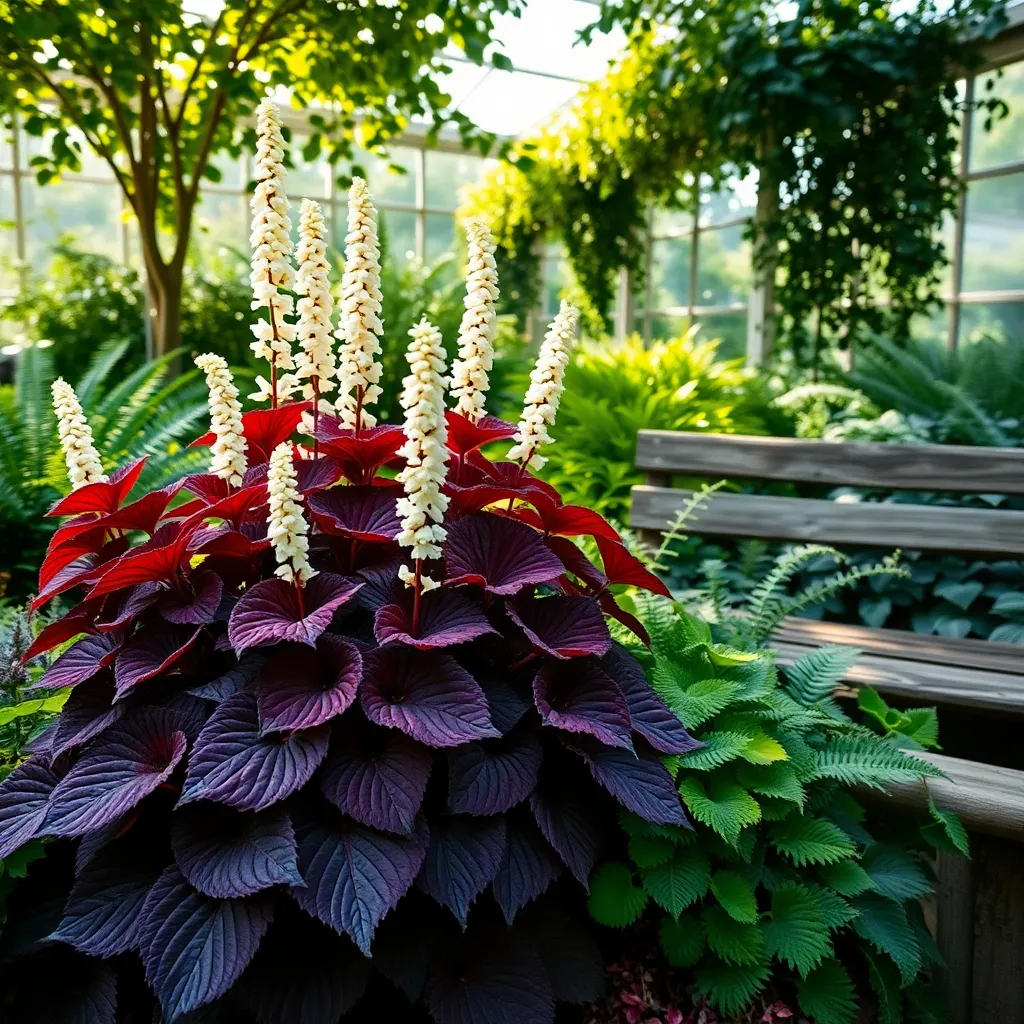
Coral Bells ‘Palace Purple’ (Heuchera micrantha) is a stunning addition to any shady garden, admired for its deep burgundy foliage and delicate flowers. This plant thrives in partial to full shade, making it a perfect choice for areas where sunlight is limited.
To successfully grow ‘Palace Purple,’ ensure the soil is well-draining and rich in organic matter. Incorporate compost into your soil before planting to enhance its nutrient content, which will support healthy growth.
Water this heuchera regularly, especially during dry spells, but avoid overwatering as it can lead to root rot. Mulching around the base can help retain moisture and keep the roots cool, which is beneficial for this shade-loving plant.
For those looking to maximize the plant’s vibrant color, consider planting it alongside contrasting foliage, such as hostas or ferns. Deadhead the flowers after they bloom to encourage continuous leaf growth and maintain a tidy appearance in your garden.
Japanese Anemone (Anemone hupehensis)
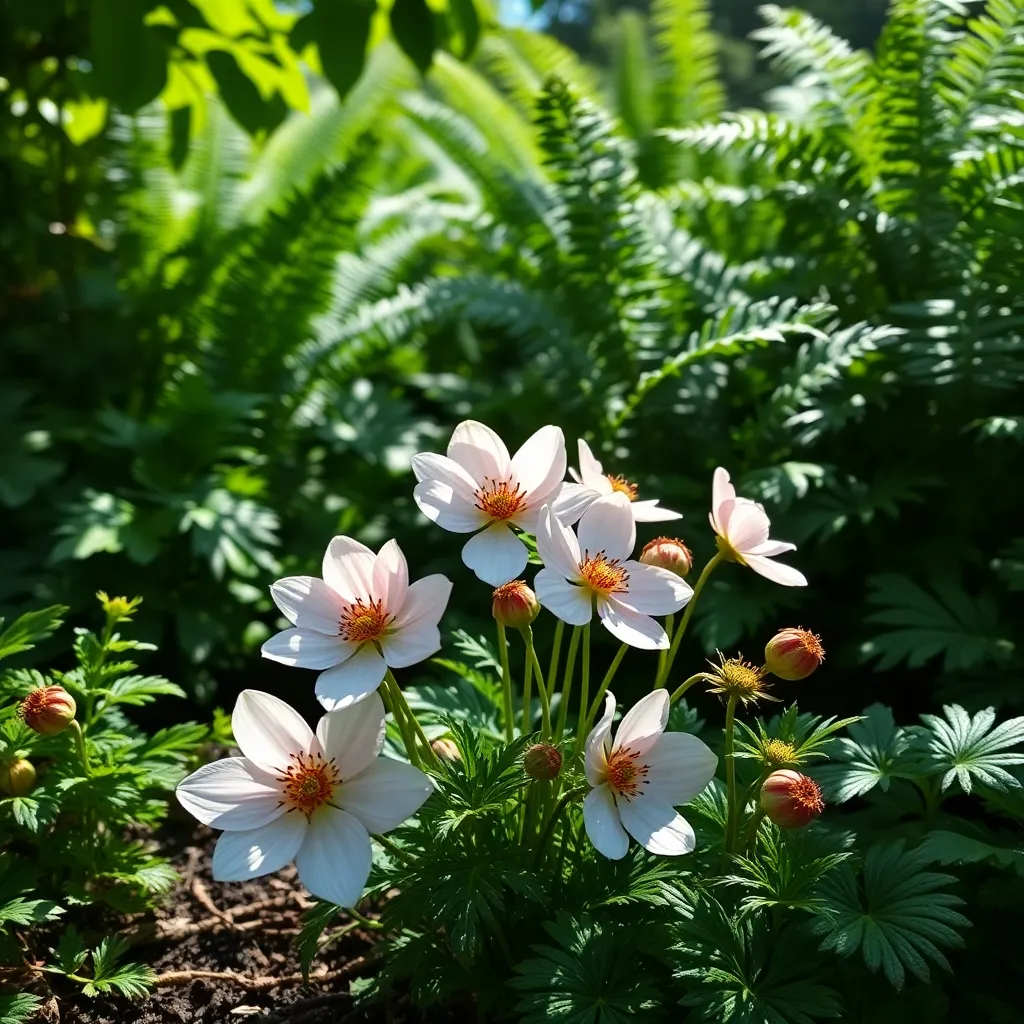
Japanese Anemone (Anemone hupehensis) is a standout choice for adding elegant blooms to shady areas. Known for its graceful, late-summer to fall flowers, this perennial thrives in partial shade, making it perfect for woodland gardens and shaded borders.
To achieve the best results, plant Japanese Anemone in well-drained, humus-rich soil. Consistent moisture is crucial, so be sure to water regularly, especially during dry spells, to prevent the soil from drying out completely.
For those in cooler climates, consider adding a layer of mulch in late fall to protect the roots from harsh winter conditions. In addition to retaining soil moisture, mulching helps suppress weeds that might compete for nutrients.
Gardeners may also appreciate the plant’s low maintenance nature, as deadheading is not strictly necessary. However, removing spent blooms can encourage a tidier look and potentially prolong blooming.
Hellebore ‘Winter Jewels’ (Helleborus x hybridus)
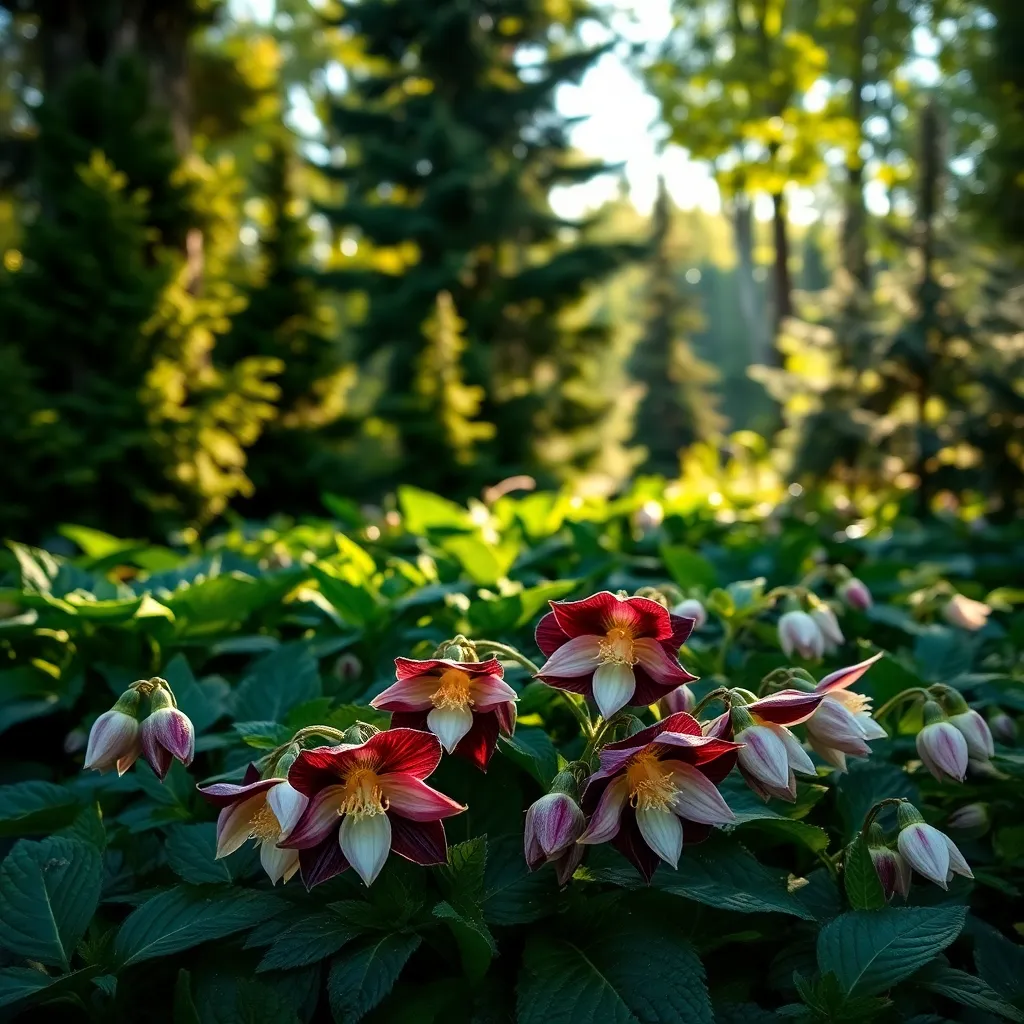
Hellebore ‘Winter Jewels’ (Helleborus x hybridus) is a stunning addition to any shady garden, offering vibrant blooms in late winter to early spring. These hardy perennials are known for their resilience, thriving in USDA zones 4 to 9, and are perfect for bringing color to your garden when most plants are dormant.
To ensure your hellebores flourish, plant them in well-draining soil enriched with organic matter. A consistent watering schedule is crucial; keep the soil moist but avoid waterlogging, which can lead to root rot.
Place hellebores in a location that receives dappled shade to protect them from harsh afternoon sun. During the growing season, apply a balanced, slow-release fertilizer to promote healthy growth and abundant blooms.
For advanced gardeners, consider dividing clumps every few years to rejuvenate older plants and encourage vigorous flowering. Additionally, removing old or damaged leaves in late winter can help prevent diseases and allow the beautiful flowers to shine.
Lungwort ‘Raspberry Splash’ (Pulmonaria saccharata)
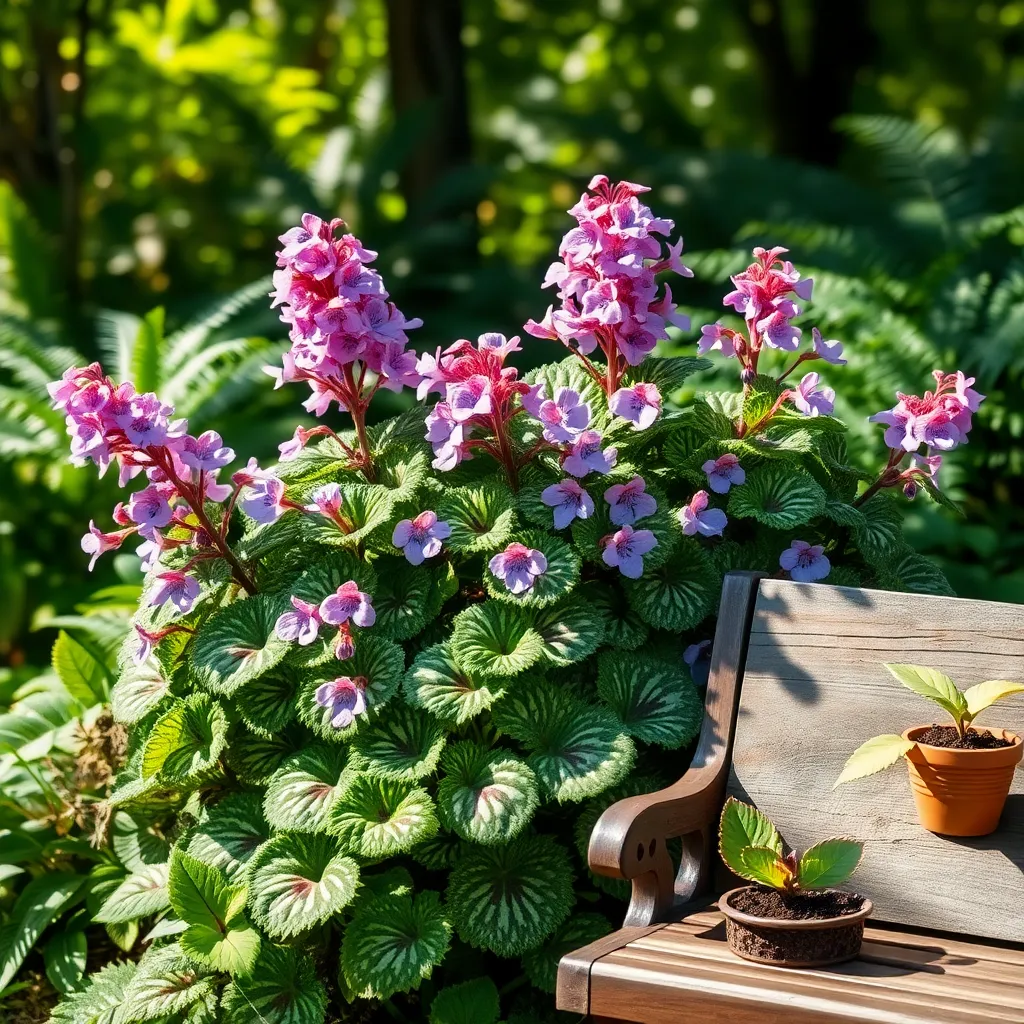
Lungwort ‘Raspberry Splash’ (Pulmonaria saccharata) is an excellent choice for adding color to shady garden areas. Known for its striking silver-spotted foliage and vibrant raspberry-pink flowers, this perennial brings visual interest even when it’s not in bloom.
To cultivate Lungwort successfully, plant it in well-drained, humus-rich soil with a slightly acidic to neutral pH. It thrives in partial to full shade, making it ideal for woodland gardens or shaded borders where other plants might struggle.
Water consistently to keep the soil evenly moist, especially during dry spells, as Lungwort does not tolerate drought well. Mulching around the base can help retain moisture and suppress weeds, ensuring your plant stays healthy throughout the growing season.
For best growth, fertilize Lungwort lightly in early spring with a balanced, slow-release fertilizer. This practice encourages robust foliage and a more abundant flowering display, rewarding gardeners with plenty of color in their shady spaces.
Foxglove ‘Camelot Rose’ (Digitalis purpurea)
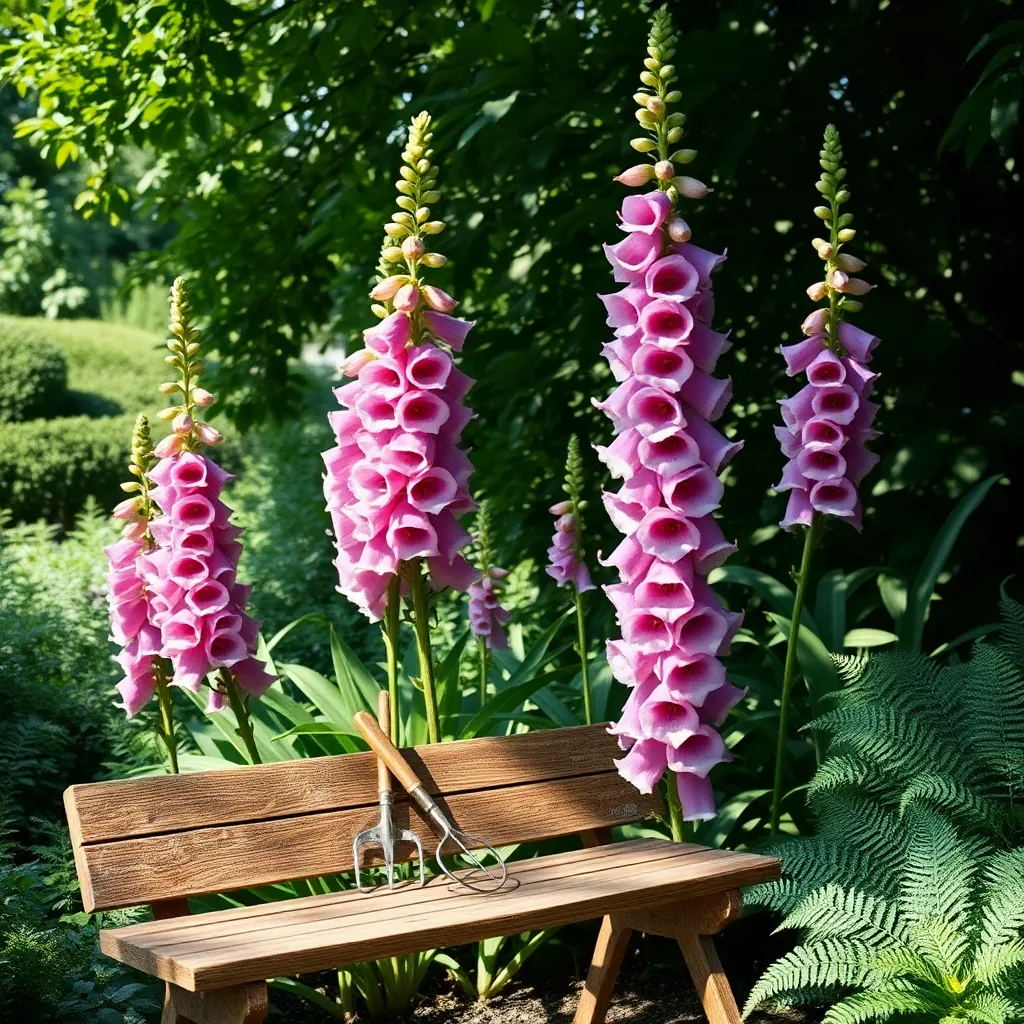
Foxglove ‘Camelot Rose’ (Digitalis purpurea) is an enchanting choice for adding vertical interest and lush color to shady garden areas. This biennial plant produces striking spikes of tubular flowers in shades of pink, attracting hummingbirds and bees with their nectar.
To thrive, ‘Camelot Rose’ prefers rich, well-draining soil with a slightly acidic to neutral pH. Ensure the soil remains consistently moist by watering regularly, especially during dry spells, but avoid waterlogging, which can harm the roots.
For optimal growth, plant foxglove seeds directly in the garden in late summer or early autumn. Space the plants about 12 to 18 inches apart to allow good air circulation, helping to prevent fungal diseases such as powdery mildew.
Beginner gardeners will appreciate that ‘Camelot Rose’ is relatively low-maintenance, needing only occasional deadheading to prolong blooming. More experienced gardeners might consider allowing some flowers to go to seed, promoting natural reseeding for future seasons of beauty without extra effort.
Fuchsia ‘Gartenmeister Bonstedt’ (Fuchsia triphylla)
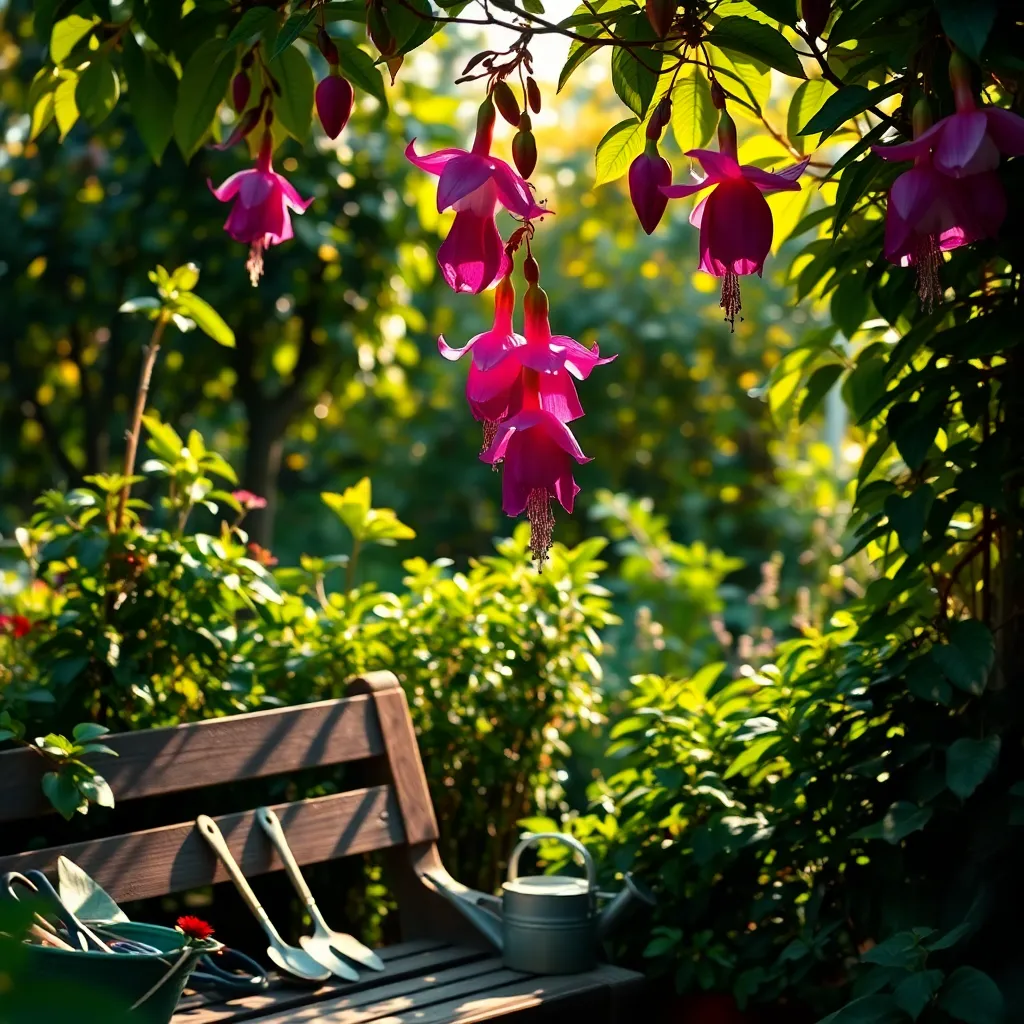
Fuchsia ‘Gartenmeister Bonstedt’ (Fuchsia triphylla) is a stunning choice for adding vibrant color to shady garden spots. Its tubular, coral-red blooms are perfect for attracting hummingbirds, making it a delightful addition to any garden.
This plant thrives best in partial to full shade, where it can enjoy cooler temperatures and avoid the harsh midday sun. For optimal growth, place it in well-draining soil enriched with organic matter, ensuring that the roots have plenty of air circulation.
Watering is crucial for the health of Fuchsia ‘Gartenmeister Bonstedt’, as it prefers consistently moist soil. However, be mindful to avoid waterlogging, which can lead to root rot; a mulch layer can help retain moisture while preventing excessive water accumulation.
To encourage lush growth and abundant blooms, consider feeding this fuchsia with a balanced liquid fertilizer every few weeks during the growing season. Pruning back any leggy stems can also promote a more compact shape and enhance flowering, making maintenance a rewarding task for gardeners.
Conclusion: Growing Success with These Plants
As we’ve explored the “10 Best Flowering Plants for Shady Areas,” it’s clear that nurturing a vibrant garden is much like cultivating a thriving relationship. Each plant, from the cheerful Astilbe to the resilient Hosta, symbolizes a key element in relationships: patience, adaptability, mutual support, growth through challenges, and the beauty of diversity. These concepts remind us that even in the ‘shady areas’ of relationships, beauty and resilience can flourish with the right care and attention.
Now, take a proactive step: choose one relationship concept that resonates with you and apply it to your relationship today. Whether it’s embracing patience or nurturing growth, a small, intentional action can make a world of difference.
As you reflect on these insights, make sure to bookmark this article to revisit these valuable tips whenever you need guidance in your relationship journey. Remember, every relationship can blossom with care and intention. By integrating these concepts into your daily interactions, you’re investing in a future where your relationships are not only enduring but exquisitely beautiful. Let this be your guide to cultivating lasting love and harmony.

